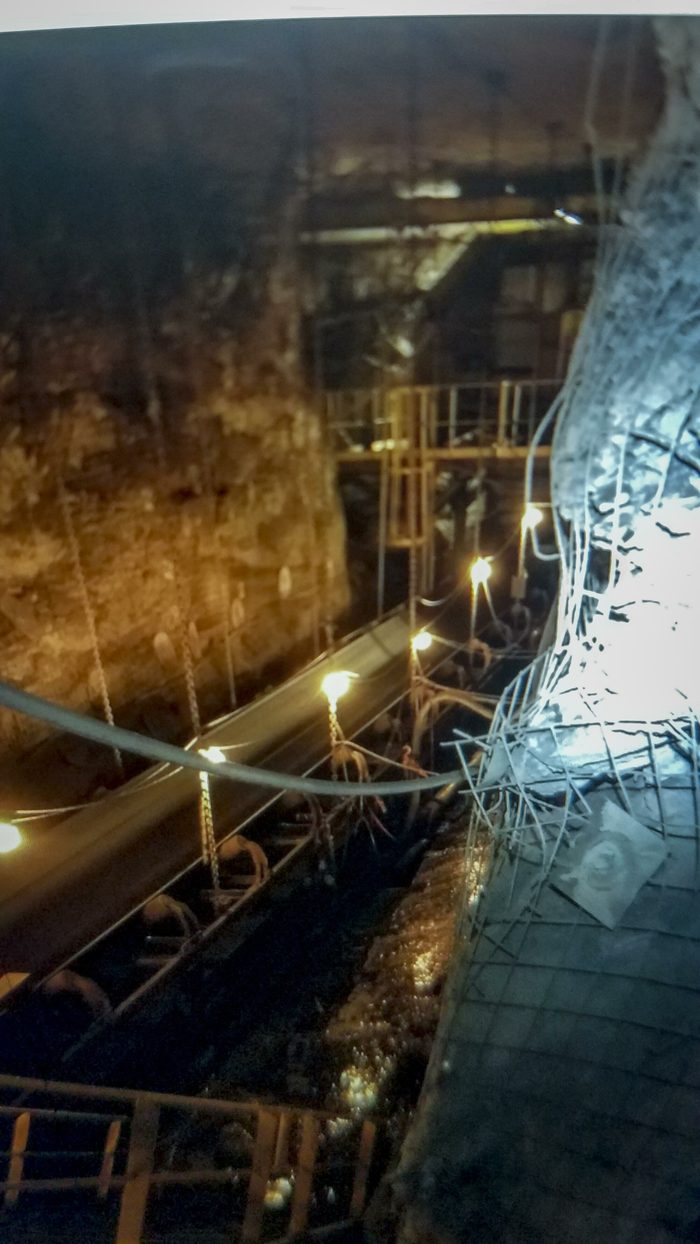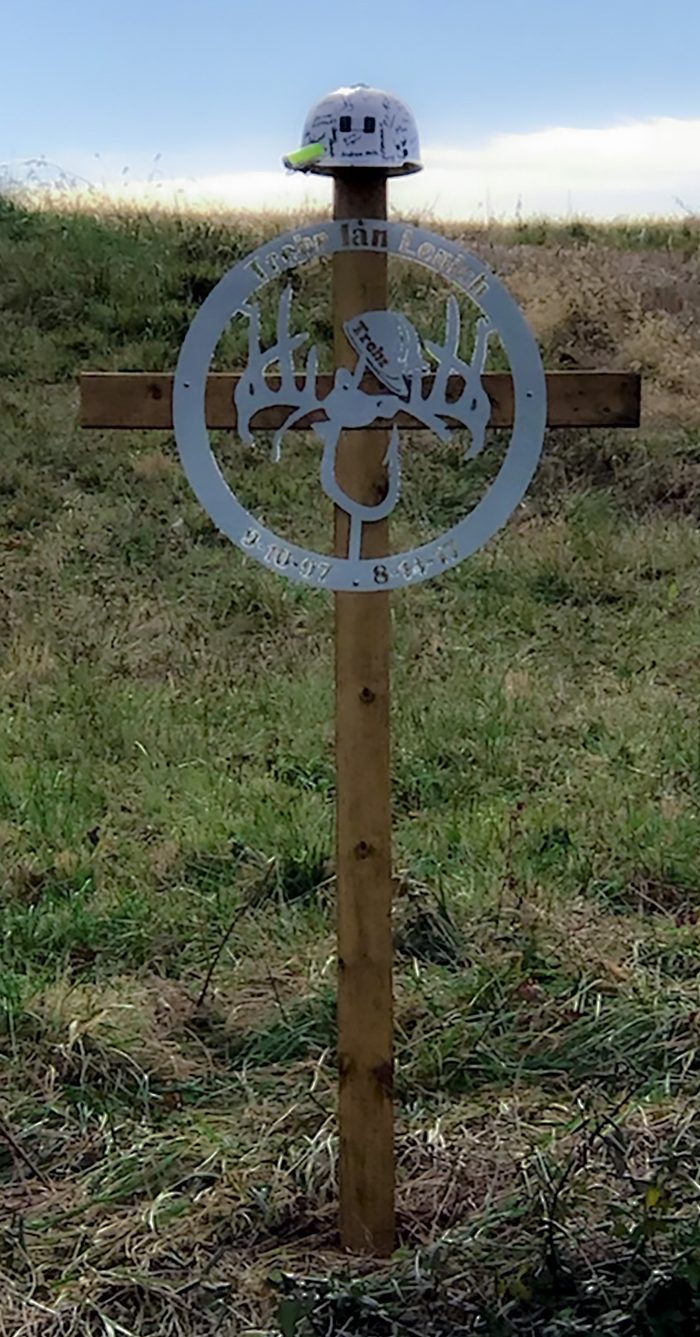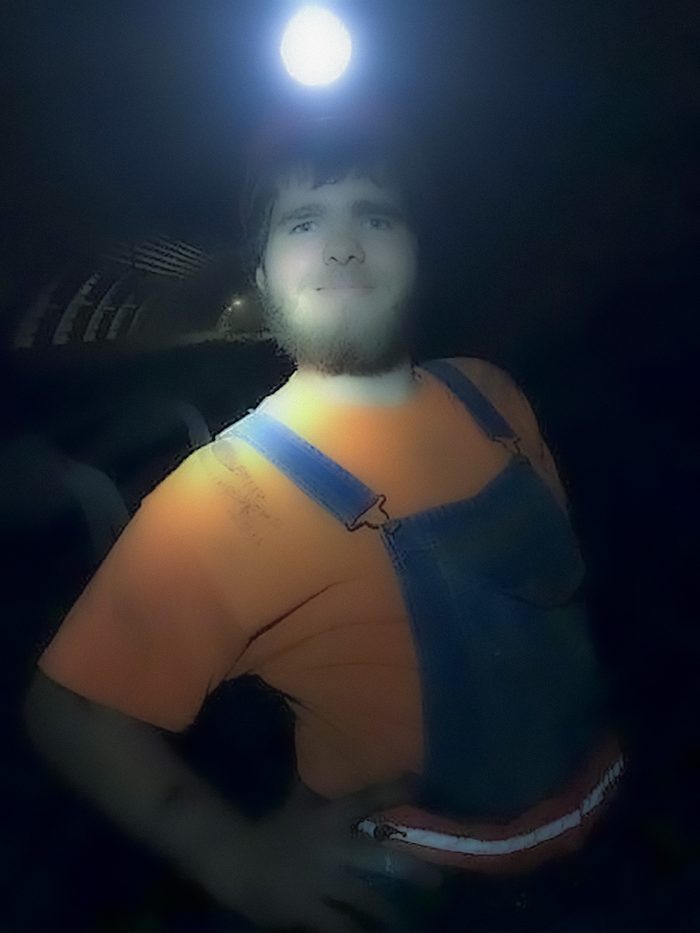In the Coal Mines, Workers Are Dying to Make a Living
Mining companies increasingly rely on cheaper contractors who face longer hours and higher risk of accidents.
Kari Lydersen

Trebr Lenich always called his mother before his drive home from overnight shifts at Mine No. 1, operated by Hamilton County Coal in Hamilton County, Ill. The call she answered the morning of Aug. 14, 2017, worried her.
“He said, ‘Mom, I am just so exhausted, so wore out,’ ” Teresa Lenich says.
Her son routinely worked long hours on consecutive days. That day, he never made it home.
Coworkers following Trebr said his driving was erratic and suspected he was falling asleep, Teresa says. Heading back to the West Frankfort home he shared with his parents, girlfriend and baby daughter, Trebr drove into a ditch and hit an embankment. According to the sheriff’s report, his engine then caught fire.
Like many young miners, Trebr was employed through a contracting company that provides temporary workers for mines with no promise that they’ll be hired on permanently.
This staffing structure — and the disappearance of labor unions from Illinois mines — has made work less safe and more grueling for miners, according to advocates and multiple studies. Without job security, temporary workers are reluctant to complain about potentially unsafe conditions (including long work hours) and to report accidents. And because temporary workers may have inadequate experience in a particular mine, they might not understand that mine’s specific risks.
One miner, who retired in 2014 after 25 years in mines across Illinois, says he saw firsthand the loss of union representation, the increasing use of contractors and the increasing pressure to work long hours, all with debilitating consequences for the safety and well-being of miners.
“Guys are working as contractors because, guess what, there are no other jobs in the industry,” he says, asking his name not be used, in fear of retaliation. “If you have two little kids at home you’re trying to feed and they say, ‘Hey, you’re staying over tonight or you’re working [overtime] tomorrow,’ basically you’re doing the job or you’re not going to be there anymore. It was never that way in the union.”
In the early hours of Jan. 5, 2019, John Ditterline, a contractor like Trebr, died in Illinois’ Hamilton County Coal Mine No. 1. Ditterline had been a miner for 28 years in Illinois and had been working for six weeks as a contractor through RWS Resources. At the time, 11 of the 34 people working in the mine were contractors, according to records from the Mine Safety and Health Administration (MSHA).
MSHA says Ditterline died after being pinned by a malfunctioning pneumatic door while he and three other contractors investigated a power cable. MSHA also determined the door was not suited for the mine’s high air pressure, and that the miners were not trained on what to do if it malfunctioned.
Hamilton County coroner Steve Bowling disputes MSHA’s findings, maintaining that Ditterline died of a heart attack through no fault of the mining company.
“MSHA doesn’t want to hear that stuff because they’re the big boys from the federal government who want to put these big fines on the coal mines,” Bowling says. “Whatever I put on the death certificate is final; no one can change it but me.”
Because of the coroner’s report, MSHA sent the investigation to its review committee, which ruled “Mr. Ditterline’s death should be charged to the mining industry.” The report also notes a video showing Ditterline was in no apparent distress before the accident, and theorizes the trauma from the accident could have triggered a heart attack.
MSHA data, provided in response to a public records request, reveals the proportion of total coal mine work done by contractors has steadily and significantly increased nationwide, rising from 4% in 1983 to 26% in 2018. And even as the total number of coal fatalities has declined, the proportion of those deaths among contractors increased between 2007 and 2015 (the most recent available data).

Longer hours, lower pay
Teresa Lenich says her son feared losing his job if he declined to work the seven-day shifts he was assigned. An Illinois state law mandates employees get a full day of rest each week, but makes an exception for miners, agricultural workers and workers canning perishable goods, among others.
According to Trebr’s pay stub from Custom Staffing Services, the Indiana firm that contracted him out, Trebr worked 65 and 67.5 hours for an $18 wage during the two weeks before his death. Teresa Lenich says her son told her the miners were under pressure to work overtime and that the job he did on the overnight shift should have had twice as many miners assigned to it.
Heather Dunlap, a then-representative of Custom Staffing, says shifts and hours are set by the mining companies themselves (like Hamilton County Coal), not by Custom Staffing. A representative of Hamilton County Coal referred questions about work with contractors and Trebr’s schedule to a lawyer for parent company Alliance Resource Partners, which did not respond to multiple requests for comment.
Teresa Lenich says she sometimes urged her son to refuse overtime or to call in sick. “He said, ‘Mom, you don’t understand. I can’t. I’ll lose my job, and if I lose my job, I can’t support my daughter,’ ” Teresa recalls. “I said, ‘Buddy, we’ll help support you until you find something else.’ He said, ‘Mom, it’s not your responsibility. I’m an adult now.’ ”
This increasing reliance on contract miners correlates to longer hours and higher rates of injuries. Lee S. Friedman, associate professor at the School of Public Health at the University of Illinois at Chicago, who conducted a study on contract miners that was published in 2019, says “working for a contractor was strongly associated with injuries occurring during extended work hours,” and that contract employees’ “odds are significantly and substantially higher than non-contract labor of being injured after eight hours of work.”
Friedman’s study concludes that injuries occurring after nine hours of work are more likely to be fatal and more likely to involve multiple miners. Miners new to the mine or working irregular shifts are also more likely to suffer more injuries during long working hours.

“Working for contractors is associated with working extended hours and irregular shifts, and the use of contract labor has been reported to be associated with inadequate training, lower compliance with occupational safety laws and higher injury rates,” the study says. “An international shift towards using contract labor and extended workdays indicates that injuries during long working hours will likely continue to grow as a problem in the mining industry.”
Mining experts say there is an important role for contractors — to provide specialized services or extra help in times of high production, for example. Contract work also sometimes functions as part of a probationary process for miners, with mining companies eventually hiring them on. But critics say that mines are relying too heavily on these contract workers, in part to save money.
Custom Staffing’s website explicitly states it helps mining companies “decrease employment costs.” The Kentucky-based RWS Resources offers a similar pitch. “With labor costs continuing to rise, our manpower services can provide a cost-effective solution,” says the company website.
Bob Sandidge, the owner and CEO of RWS Resources, says miners employed through his company typically earn hourly wages about $1 – $6 less than workers directly hired by the mine.
Sandidge cautions that miners may work long hours for several-week stretches, but “you can’t drive them into the ground.
“If you have a special project and someone has to hammer 60 hours a week for a couple weeks, then everyone jumps in and does it,” he says, “but then, we give them a break.”

The data
According to the 2019 Friedman study, contract miners accounted for 3.3% of mining injuries in 1983, jumping fourfold to 12.5% by 2015. An analysis of available MSHA data conducted by the Centers for Disease Control and Prevention also finds that, between 2007 and 2015, mining contractors had higher odds of being killed than direct hires.
A 2013 study from the University of Pennsylvania confirms that between 1998 and 2007, contract miners suffered a higher proportion of fatal injuries (relative to all injuries) than direct hires.
“We found that for contractors, a higher proportion of injuries that occurred more than eight hours into a shift and on the first [overnight] shift were fatal, compared to other times of day,” says study co-author Kristin Cummings, who works with the National Institute for Occupational Safety and Health. “We did not see the same pattern for [direct hires]. We do not know the reason why, but speculated that contractors may have less experience and more difficulty functioning safely after working overnight into the morning.”
According to the study, injuries suffered by contractors were about three times more likely to be fatal — but direct hires had more total injuries.
“There are two ways to look at this,” Cummings says. “It could be because contractors were actually at greater risk of having a fatal injury, or it could be that contractors were just less likely to report a nonfatal injury.”
The University of Pennsylvania study also finds contractors have a higher chance of being fired or transferred because of an injury.
“Possible explanations,” according to Cummings, “are the contractors had more severe injuries, so couldn’t continue in the same job; that there was a lower threshold to transfer injured contractors; or there were fewer options for modified jobs for contractors, so they couldn’t be transferred to another job and instead had their employment terminated.”
While the Friedman and Cummings studies did not examine the reasons behind the increased risks on long shifts, they both suggest fatigue is a “critical element,” as Friedman puts it. Friedman adds that exhaustion is an increasing concern for contractors and direct hires alike.
“The mining industry has moved away from eight-hour shifts and is moving toward 10- and 12-hour shifts,” Friedman says. Data from the Bureau of Labor Statistics reveals miners and loggers (the industries are grouped together in the data) work more weekly hours than workers in other private sector jobs, averaging 46.3 weekly hours in February 2019 — compared with 34.4 hours across the private sector.

No unions, little recourse
Union officials and other experts suggest contract miners may work in more dangerous conditions than direct employees because of how easily they can be fired — and, therefore, these workers don’t want to raise any concerns. And contractors who earn lower wages may be more eager to accept overtime, working longer hours.
“They’ve got contractors coming in and doing the same job regular employees do for half the money with no future,” according to Ronnie Huff, an international representative (based in Illinois) of the United Mine Workers of America (UMWA).
UMWA once represented thousands of Illinois mine workers, but not a single union mine exists in Illinois today. The last underground coal mine with union representation — Springfield Coal’s Crown III — closed in 2013. Foresight Energy, a leading coal mining company in Illinois, has never had unions in its mines.
If direct hires were unionized, the union would likely fight against the industry’s extensive use of contractors. But without a union, according to Huff and other labor advocates, all miners — direct hire or contractor — have less power to demand better conditions or shorter hours.
Since her son’s death, Teresa Lenich has tried to spotlight and change the law that exempts miners from a guaranteed, weekly day off. She contacted then-Illinois Attorney General Lisa Madigan and wrote to former President Donald Trump, hoping they would help. Madigan’s office communicated with Teresa periodically, but Madigan has since left office; Teresa has not been in touch with the current state attorney general. She also says she was surprised not to hear back from Trump, “since he says he’s for the people.”
Teresa sometimes scrolls through old photos saved on her son’s phone — of the mine, of his family. She reminisces about how Trebr seemed to grow up overnight after his daughter was born. Earning money to support his daughter was what kept him going during his long shifts, Teresa says, but now he won’t see her grow up.
“I can’t do nothing for my son,” she says. “But if I could get it where no other mother has to hurt like this, that would be something. He was just so tired. Nobody should lose their life because the company won’t give them a day off.”
Reprinted with permission from the Energy News Network. This article is part of a five-part series on Illinois coal mining deaths, “Danger Underground.”
Kari Lydersen is a Chicago-based journalist, author and assistant professor at Northwestern University, where she leads the investigative specialization at the Medill School of Journalism, Media, Integrated Marketing Communications. Her books include Mayor 1%: Rahm Emanuel and the Rise of Chicago’s 99%.









